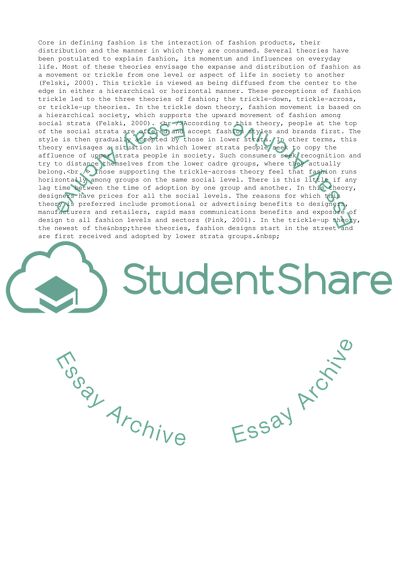Cite this document
(The Fashion Industry Term Paper Example | Topics and Well Written Essays - 2731 words, n.d.)
The Fashion Industry Term Paper Example | Topics and Well Written Essays - 2731 words. Retrieved from https://studentshare.org/business/1621710-how-do-consumers-engage-with-fashion-as-a-routine-aspect-of-everyday-life
The Fashion Industry Term Paper Example | Topics and Well Written Essays - 2731 words. Retrieved from https://studentshare.org/business/1621710-how-do-consumers-engage-with-fashion-as-a-routine-aspect-of-everyday-life
(The Fashion Industry Term Paper Example | Topics and Well Written Essays - 2731 Words)
The Fashion Industry Term Paper Example | Topics and Well Written Essays - 2731 Words. https://studentshare.org/business/1621710-how-do-consumers-engage-with-fashion-as-a-routine-aspect-of-everyday-life.
The Fashion Industry Term Paper Example | Topics and Well Written Essays - 2731 Words. https://studentshare.org/business/1621710-how-do-consumers-engage-with-fashion-as-a-routine-aspect-of-everyday-life.
“The Fashion Industry Term Paper Example | Topics and Well Written Essays - 2731 Words”, n.d. https://studentshare.org/business/1621710-how-do-consumers-engage-with-fashion-as-a-routine-aspect-of-everyday-life.


